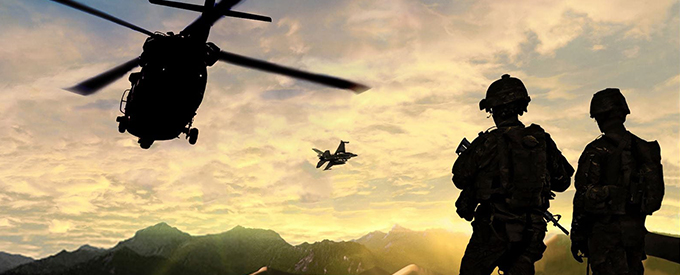2023-03-01
Collins’ Unified Network System Keeps Threats at Bay
As IT solutions and networks were becoming more important across the military, the different services and branches of the military began to build out their own networks resulting in disparate systems operating in silos.
Today, as the armed forces in the region are actively working to improve the integration between the different services and enable more cohesive, joint operations, these stove-piped networks are a liability.
As Richard Jerome, Director of business development, Mission Systems at Collins Aerospace, points out, “They hinder communication and information sharing. They keep senior leaders from getting timely, relevant Intelligence, Surveillance, and Reconnaissance (ISR) data to aid in decision-making.”
So, there is a need to make these disparate networks —including some antiquated technologies that can’t be replaced because of capability or cost— interoperate. “And this is where our solutions play a role” stresses Jerome.
Collins Aerospace, a Raytheon Technologies business, provides secure HF, VHF and UHF radios, satellite voice and data communications systems, jam-resistant data links, and has invested in software-defined radios and gateway solutions to unify these networks. This gives new technologies a clear path for integration into the battlefield network. This rapid integration allows the warfighter to continually ingest critical data that may not have been available before in a common operating picture.
Collins Aerospace is a recognised industry leader in ISR sensors and data exploitation with systems already fielded in the Middle East region. Its new generation MS-110 Multispectral Imagery sensor provides the ability to detect objects and activity at long range, with a wide area coverage that supports both tactical and national-level reconnaissance missions. It is the only fully developed and flown fast jet multi-spectral system.
SCI-Toolset
The new Collins SCI-EDGE Software, part of the SCI-Toolset suite of imagery exploitation software, will significantly lessen the workload on imagery analysts by automating target detection and classification.
Collins Aerospace’s SCi-Toolset provides a comprehensive set of sensor and platform agnostic tools built on top of the NATO Coalition Shared Data (CSD) architecture. It is utilised by over 14 nations and is a proven capability for multi-domain operations and interoperability with other NATO allied organisations or coalition partners.
The SCi-Toolset is designed around the Joint ISR work flow with an intuitive interface. It is capable of handling very large data volumes, facilitating expedient processing, exploitation and analysis. The product cataloguing, distributed information management, and tasking capabilities behind the SCi-Toolset are STANAG 4559 Edition 4 (AEDP-17 and AEDP-19) compliant.
The SCi-Toolset can be deployed across physically distributed sites interconnected on existing network infrastructures.
Each instance of the SCi-Toolset is a CSD server, which persistently shares its content with other STANAG 4559 Edition 3 and Edition 4 compliant CSDs. It uses minimal network traffic to ensure users from anywhere across the enterprise can rapidly discover ISR products by simply looking at a common operating picture.
Interconnected instances of the SCi-Toolset give operators richer features beyond STANAG 4559 Edition 4 CSD structure. Enhanced visualisation provides users with web-based exploitation and analysis.
Recent Exercise
In a recent exercise, Collins Aerospace demonstrated a multi-level, secure network that allowed the establishment of a common operating picture for division commanders and managed to distribute time-sensitive imagery across a unified network to multiple warfighters. “We also enabled the participants to identify threats and effectively pass threat data from sensor, to commander, to shooter,” adds Jerome.
If the military is able to build a network of networks with intelligent gateways that connect all sources of data and intelligence, it can deliver some exciting capabilities to the warfighter. For example, if a fighter jet pilot sees a target, they could communicate across the Joint Fires Network and potentially pass that target off to another system that can apply effect on that target.
“What we’re enabling is the ability for all warfighters to see a threat and quickly disseminate that threat to the rest of the force,” concludes Jerome. “Compare that to their experience today, where warfighters in a helicopter for instance see something, and have to manually punch the threat information into their computers to alert others. In a unified network environment, that threat would be identified, and all warfighters that need to know about it would be alerted in a much more rapid, automated way” .


No Comments